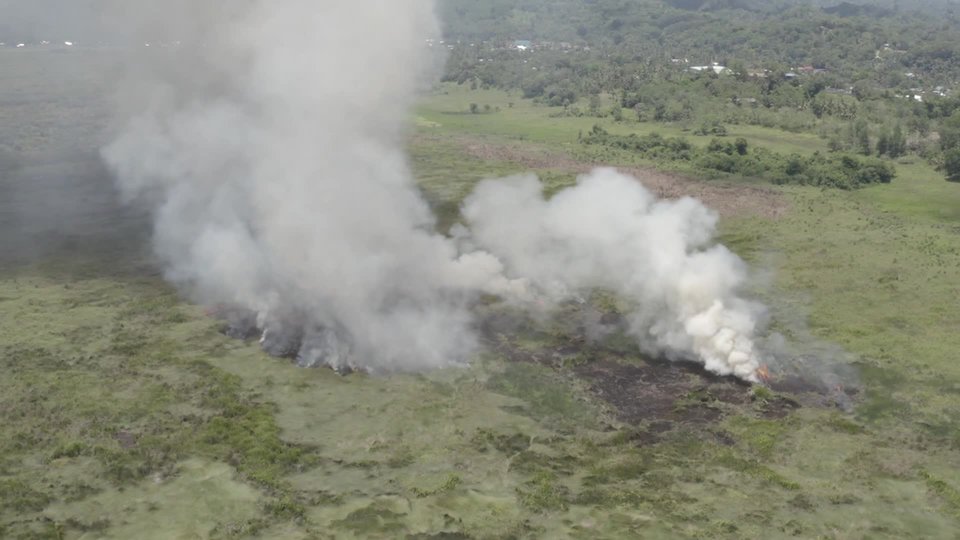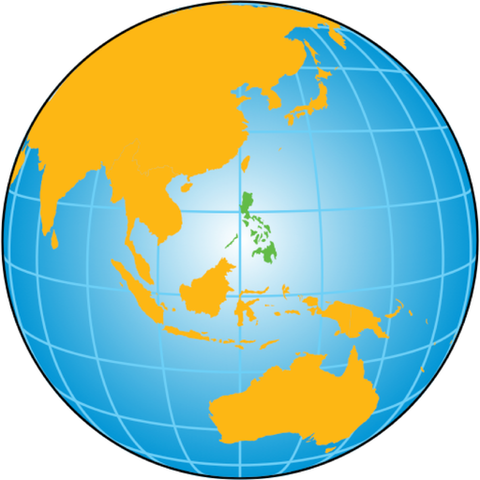
Indian
Ocean
PacificOcean
Asia
Australia
Philippines
AgusanMarsh
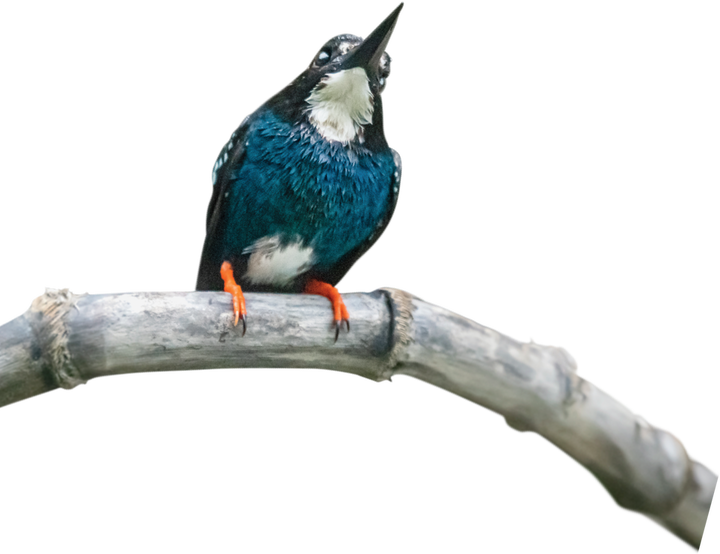
Asilverykingfishersitsona branch.
TheAgusanMarshisawetlandecosysteminthePhilippines.Itismadeupofmarshes,lakes,rivers,andswampsthat connect.
TheAgusanishometomanyplantandanimalspecies.Icomeheretophotographthem.Morethan200 endemicandmigratorybirdslivehere.SomecomefromasfarasRussia,Japan,andChinainwinter.Itisalsohometomorethan100speciesoffloweringplantsand trees.
PlantsandanimalssharethiswetlandwiththeManoboTribe.Theseindigenouspeopleliveinfloatinghousesinthe marsh.
Here,thelandscapechangesfromwatertolandbyseason.Duringthewetorrainyseason,itbecomesavastbay.Itstoresrainwater.Itshieldsthelandfromtropicalstorms.Itprotectscitiesandtownsfromfloods.Italsofiltersthewaterandcleans it.
MarshlandDangers
Despitebeingaprotectedarea,theAgusanMarshisintrouble.Climatechangeisaconstantthreat.Thewaterlevelsinsomeareasarefallingdueto drought.
Atthesametime,recurringtyphoonshavecauseddisaster.Stilthousesinfloatingcommunitiesaredestroyedby flooding.
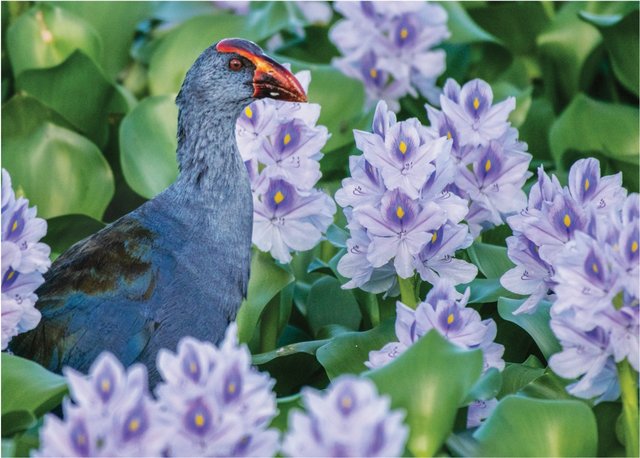
Apurpleswamphenrestsamidwater lilies.
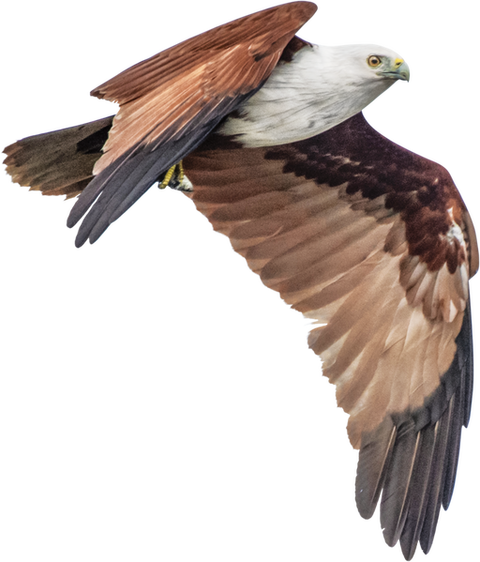
AbrahminykitesoarsabovetheAgusan River.
Thereareotherchallenges,too.Layersandlayersofpeatlandsarebeingburnedtoclearthelandforbuilding.Asaresult,roostingsitesofbirds,suchasegrets,havebeendisturbedbyplumesof smoke.
Theburningofthesepeatlandsalsoreleasestonsofcarbonintotheair.Thisspeedsuptheimpactofclimatechangebyraisingtemperatures.Thisinturndisturbstheecological balance.
peatfiresintheAugusan Marsh
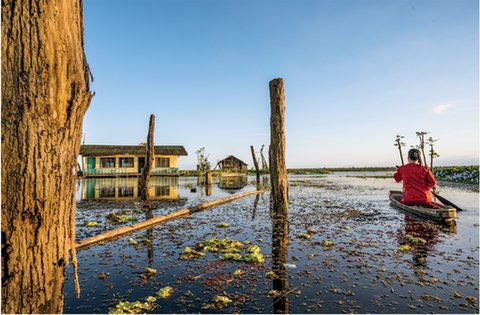
TheManoboliveinhousesthatrestonthe water.
StrengthinCommunity
Allisnotlost,however.TheManoboandpeoplewhocareabouttheenvironmentareworkingtogether.Theywanttoprotectthe marsh.
Byenforcingenvironmentallaws,theyareputtinganendtomanydamagingpractices.Theyarepressuringcompaniestostopburningpeatlandsandcuttingdowntheswampforests.Thisshowsrespectforthe marsh.
abird’s-eyeviewoftheManobovillageinthe marsh

